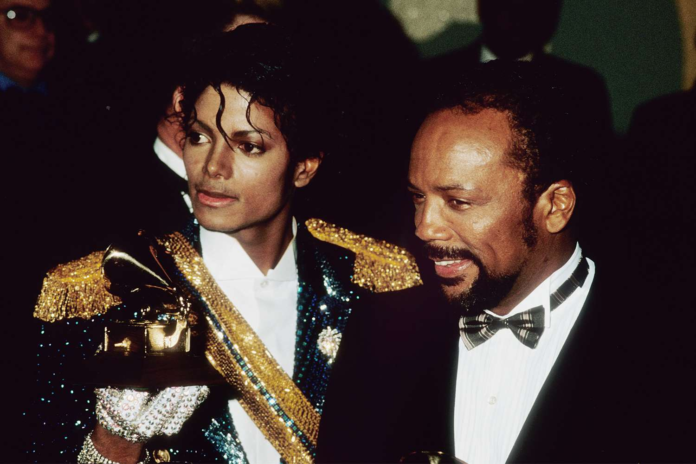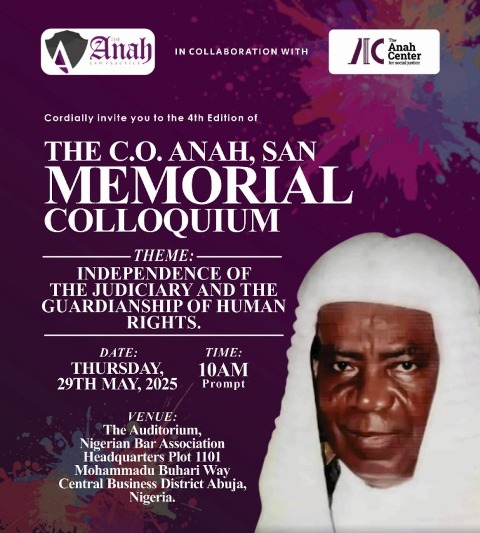Monday, November 04 2024, The Times
Giant of the record industry whose credits included Thriller, the biggest-selling album in pop history
When Quincy Jones produced Michael Jackson’s Thriller, he had to deal not only with the King of Pop’s notorious caprices but also with the menagerie which he brought with him to the studio. There was Jackson’s pet chimpanzee Bubbles, who bit Jones’s daughter. Then there was the singer’s pet snake Muscles, which coiled itself around Jones’s leg.
“Man, I didn’t like that at all. It would crawl across the console,” he recalled. One day the snake went missing. “We went downstairs and Muscles was in the parrot cage. He had just eaten the parrot.”
In the midst of this zoological chaos, Jones helped Jackson to record the biggest-selling album in pop history. Thriller went on to sell an estimated 100 million copies worldwide and spawned seven top ten singles, including Billie Jean, Beat It and the title track, which became Jackson’s signature tune.
Not that Jackson was particularly grateful. When Jones was nominated for a Grammy award as best producer for his work on Thriller, Jackson — who had received seven nominations of his own — lobbied his record label to withdraw Jones’s nomination. Thriller was “his” record, he argued, and he did not see why he should share the credit with anyone else. His record company refused and Jones duly won his award.
It was one of 27 Grammys he won in his long career as conductor, band leader, producer, arranger and composer. Jones’s work spanned jazz, soul, rock, pop, disco, ballads and funk and by the time he was booked to produce Thriller, he was already the hottest “back room” man in the music industry.

The scheduled start date for the sessions had to be postponed while he finished making an album with disco queen Donna Summer. Once work had belatedly begun on Jackson’s album, recording had to stop again while Jones took a leave of absence to cut a record with Paul McCartney. Then Steven Spielberg called and gave him a month to record the soundtrack to the movie ET, while Frank Sinatra was waiting in the wings for Jones to produce his next album.
Jones took to spending days on end in the studio, deprived of sleep and never going home. “Yeah, but that’s where the creative stuff comes in, the unconscious mind,” he said. “It was tough. But we did it.”
Despite being wedded to his work, Jones found time to father seven children with five different women. He was married to Jeri Caldwell from 1957 to 1966 and to the Swedish actress Ulla Andersson from 1967 to 1974. Both marriages were annulled.
The day after his divorce from Andersson, he married Lipton, whom he had been introduced to by his teenage daughter, and who gave up her career to become a stay-at-home wife and mother. After their divorce, he lived with German actress Nastassja Kinski from 1991 to 1995, and they had a daughter named Kenya, who is a model. He also claimed to have dated Ivanka Trump. He is survived by his daughter Jolie, a singer, from his first marriage; a second daughter Rachel, from a brief affair with Carol Reynolds; Martina, a model, and Quincy, a music producer, from his second marriage; two daughters, Kidada and Rashida, both of whom are actresses, from his third marriage; and his sixth daughter Kenya.
Yet it came at a cost and destroyed his 13-year marriage to the actress Peggy Lipton and mother of two of his children. “Our love never changed but Quincy’s life changed after his success with Michael,” Lipton said. “The popularity made demands on his time and his life and he had to change to meet them. He was doing his own thing, and I was doing mine.”
At a time when mixed-race marriages were unusual, his choice of partners attracted comment, some of it hostile. Blond-haired and blue-eyed, Lipton recalled: “It could be ugly out there. Wherever Quincy and I went, there was an edge to people’s reactions.”
Although Jones recorded big-selling hit albums under his own name, it was his ability to assist others to realise their musical vision for which he was best known. When asked who had impressed him most among those he worked with in his long career, he reeled off “a little list” that included Oscar Peterson, Charlie Mingus, Roland Kirk, Dizzy Gillespie, Miles Davis, Sarah Vaughan, Billie Holiday, Ella Fitzgerald, Louis Armstrong, Lionel Hampton, Duke Ellington, Tony Bennett, Diana Ross, Lena Horne, Ray Charles, Sinatra, Gene Krupa, Louis Jordan, Dinah Washington, Andy Williams, Billy Eckstine, Charles Aznavour and Aretha Franklin.
Tellingly, Jackson didn’t even make his top 25. Nor did Bob Dylan, Stevie Wonder, Bruce Springsteen, Paul Simon, Tina Turner and Lionel Richie, all of whom he corralled into a studio in 1985 to record We Are the World, the biggest-selling single of all time.
Most of the names on his list reflected his love of jazz, although he was anything but a purist. “A jazz musician can either be an artist and do progressive things or he can work on pleasing the people,” he noted early in his career. “I think a happy medium between the two can be reached.”
They were sagacious words that provided the maxim that underpinned his entire career.
Born Quincy Delight Jones in Chicago, Illinois in 1933 his mother Sarah worked in a bank and his father Quincy Delight Jones Sr worked for a notorious pair of gangsters, who were rivals of Al Capone. When he was seven his mother suffered a breakdown and was sent to an asylum. The memory of seeing her taken away by men in white coats never left him.
When his father remarried, his stepmother beat him. Jones ran wild. He recalled seeing “dead bodies and machine guns” on the streets of Chicago’s South Side. “It was the biggest black ghetto in the worst depression. There was nothing but gangsters around us and I wanted to be one, too,” he said.
His life changed at the age of ten when he discovered a piano in a property he was robbing. “When I touched the keys every cell of my body said: “This is what you’re going to do for the rest of your life.” That day I stopped wanting to be a gangster and started wanting to be a musician.”
Shortly after the family moved to Seattle, where at high school Jones learned to play the tuba, then the saxophone and finally the trumpet. At 14, he formed a band with Ray Charles and fell under the spell of the blind singer whom he called his “big brother” until Charles’s death in 2004.
In 1951 he won a scholarship to the Berklee College of Music in Boston, where he is feted as one of the school’s most celebrated alumni, his application housed in a glass display case. In truth, Jones dropped out after his first year when he landed a job playing trumpet in Lionel Hampton’s band.
By 1953 he had moved to New York City and was soon working on arrangements for some of the biggest names of the day, including Sarah Vaughan, Count Basie and Ellington.
Yet he had no intention of abandoning his ambitions as a performer and in 1957 he landed a contract with ABC Records, releasing his debut album as a bandleader. By then he was also trumpeter and musical director in Dizzy Gillespie’s band.
In 1957, he moved to Paris to study under Nadia Boulanger at the American Conservatory, where he also attended lectures by the composer Olivier Messiaen and Pierre Boulez.
He relished the bohemian multi-culturalism. “In the America I grew up in there was apartheid, but I went to Paris and it taught me there could be a balance between black and white,” he said. “When Ray Charles and I were kids in Seattle we didn’t have the black role models that young black people have today, like Oprah and Barack.’
In Paris he played in the clubs in the Latin Quarter and landed a job as music director at the French record label Barclay, where he worked with the leading French singers of the day, including Aznavour and Jacques Brel.
He also hung out with Josephine Baker, Francoise Sagan and Pablo Picasso, who had his studio over the street from Jones’s apartment. He recalled lunch of sole meunière with the painter, who got out his brush and adding a few stokes in red, yellow and blue to his plate, alongside the fish bones. When the waiter brought l’addition, Picasso gave him the plate.
He returned to New York in 1961 to become musical director of Mercury Records and enjoyed immediate pop success producing Lesley Gore’s No 1 hit It’s My Party. By 1964, he had been promoted to vice-president, the first African-American to hold such a senior position with a big record label.
In the event, his tenure was short-lived for around the same time, Sidney Lumet asked Jones to compose the score for his film The Pawnbroker. Buoyed by the film’s success, he resigned from Mercury and relocated to Los Angeles to move into the lucrative world of film scores. Over the next three decades he composed soundtracks for more than 30 feature films, including In the Heat of the Night, Bob & Carol & Ted & Alice, The Getaway, The Italian Job, and The Colour Purple. He also worked profitably in television, writing the theme music for Roots, Ironside, The Bill Cosby Show and the Fresh Prince of BelAir.
After meeting Frank Sinatra in France in 1958, he was hired to arrange the singer’s 1964 album It Might as Well Be Swing, creating definitive versions of Fly Me To The Moon and The Best Is Yet To Come. He also conducted and arranged the live album, Sinatra at the Sands, recorded in Las Vegas.
At the time black musicians were served their meals in the kitchen, not the casino, and were forced to stay at cheaper “black” hotels. Sinatra demanded that all members of his orchestra should be treated alike and assigned a posse of bodyguards to look after Jones and his other black backing musicians. “If anyone so much as looks at them funny, I want you to break both of their legs,” Sinatra instructed. “Frank was tough, man. But he got rid of racism there,” Jones said.
Two decades later Sinatra summoned Jones back to produce his final solo studio album LA Is My Lady. After they had finished the record, Sinatra took off his gold ring with his family crest engraved upon it and gave it to his producer, who wore it for the rest of his life.
Two cerebral aneurysms and major brain surgery in 1974 almost cost him his life and resulted in him having to give up playing the trumpet — but his greatest triumph was still to come.
While working with Diana Ross and Michael Jackson on the soundtrack for the 1978 film The Wiz, Jackson asked Jones to recommend a producer for Off The Wall, his first solo album since leaving Motown. Jones told him he would be happy to take a shot at it himself.
Jackson’s new label, Epic, was initially opposed and claimed that Jones was “too jazzy”, but the success of the producer’s own funk-fuelled 1981 solo album The Dude — which included three Top 20 hit singles in Just Once, One Hundred Ways and Razzamatazz — sealed the deal.
Off the Wall sold 20 million copies, a figure exceeded by 1982’s Thriller, while 1987’s Bad — Jones’s third production for Jackson — racked up a further 35 million sales.
They never worked together again, not least because Jones had no time for superstar narcissism. When he corralled the world’s biggest stars to record We Are the World, he pinned a sign to the studio door which read “Check your ego at the door”.
Jones’s own fortune was estimated at $400 million yet he insisted he had never made music for money or fame. “Not even Thriller. God walks out of the room when you start thinking about money.”
Quincy Jones, music producer, was born on March 14, 1933. He died on November 3, 2024, aged 91
Culled from The Times UK





